Heinkel He 177
Prototypes série B. B Series prototypes
 Heinkel He 177 B-5 "NN+QQ" (W.Nr. 535550) - V101
Heinkel He 177 B-5 "NN+QQ" (W.Nr. 535550) - V101
© Bert Hartmann LuftArchiv.de
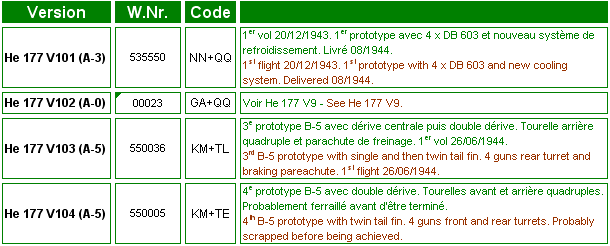
Technical data Fiche technique - (He 177A-5/R2)
 Heinkel He 177 A-5 - 4.(2.?)/KG 40 - FuG 200 + HS 293A, Bordeaux-Merignac (France)
Heinkel He 177 A-5 - 4.(2.?)/KG 40 - FuG 200 + HS 293A, Bordeaux-Merignac (France)
artiste inconnu - artist unknown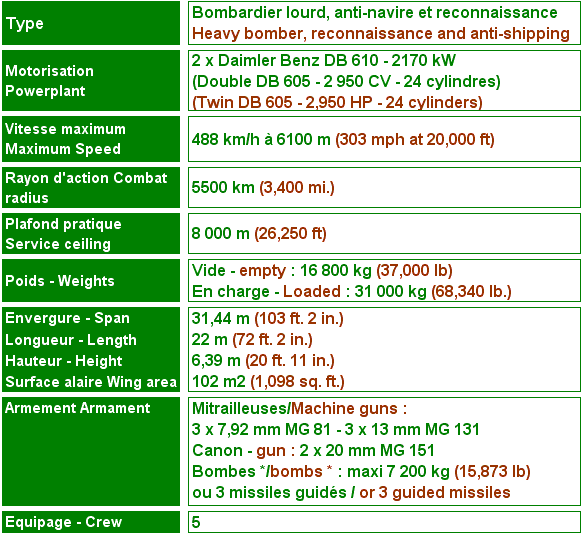
* Bombes - bombs :
- 48 x 70 kg (3,360 kg/7,405 lb)
- 10 x 500 kg (5,000 kg/11,020 lb)
- 6 x 1000 kg (6,000 kg/11,224 lb)
- 2 x 2500 kg (5,000 kg/ 11,020 lb)
Ou missiles (sous le fuselage)- or missiles (under the fuselage)
- 2 Hs 293 + 1 Hs293 commandés à distance - remotely controlled
- 2 Hs 294 + 1 Hs 294 commandés à distance - remotely controlled
- 2 PC 1400 Fritz X + 1 PC 1400 Fritz X radio-guidés - radio-guided
- 2 torpillles + 2 torpilles - 2 torpedoes + 2 torpedoes
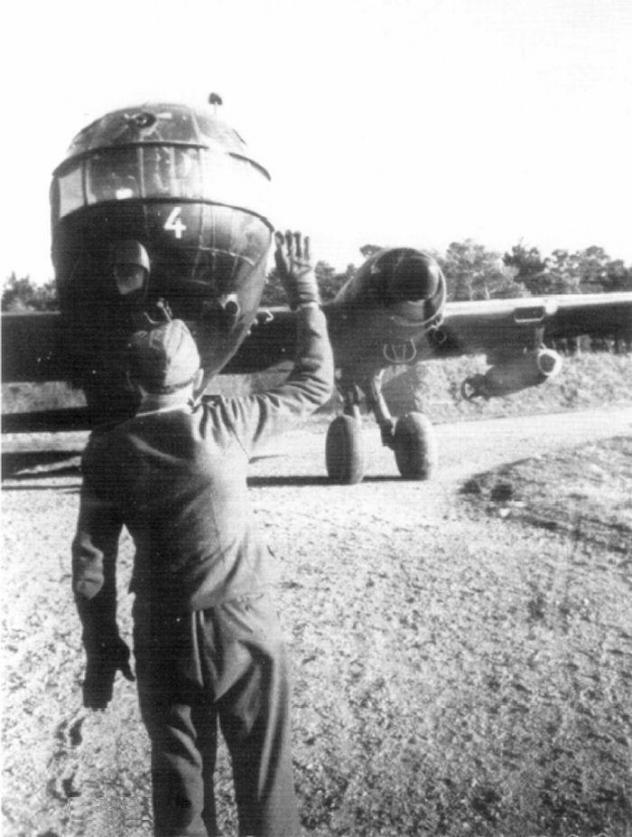 Heinkel He 177 A-3 avec bombes, with bombs - Photo : auteur inconnu - author unknown
Heinkel He 177 A-3 avec bombes, with bombs - Photo : auteur inconnu - author unknown
Historique opérationnel
Operational history
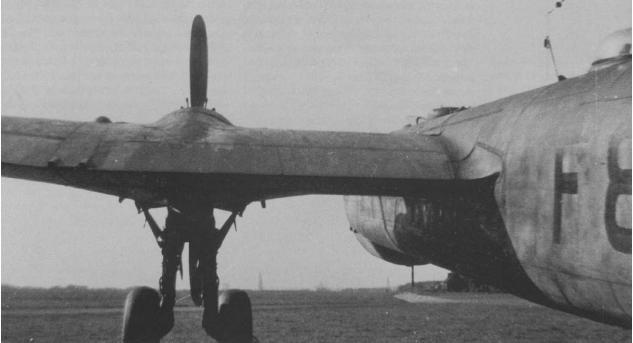 Heinkel He 177 - Photo : auteur inconnu - author unknown
Heinkel He 177 - Photo : auteur inconnu - author unknown Heinkel He 177 A-5 - II./KG 100
Heinkel He 177 A-5 - II./KG 100
Aalborg, Danemark, mi 1944 - Aalborg, Denmark, mid-1944.
artiste inconnu - artist unknown
Fin juin 1941, le IV(Erg)/KG 40 (Erganzung -remplacement immédiat. Chaque escadre ou groupe autonome possède sa propre formation pour compenser les pertes) reçoit le He 177 pour familiarisation et achèvement de la mise au point. En mai 1942, son 10(Erg)/KG 40 devient 15/KG 40 pour se consacrer uniquement au He 177, dont un an d'essais a montré les graves défauts.
Late June, 1941, the IV (Erg)/KG 40 (Erganzung - immediate replacement. Every squadron or autonomous group has its own squadron to compensate for the losses) receives the He 177 for familiarization and completion of the development. In May, 1942, its 10 (Erg)/KG 40 becomes 15 / KG 40 to dedicate itself only to He 177, after one year of trials which showed the grave defects.
 Heinkel He-177 A-5 - 5./KG 40, Bordeaux (France), juillet/July 1944
Heinkel He-177 A-5 - 5./KG 40, Bordeaux (France), juillet/July 1944
© Srecko Bradic - www.sreckobradic.com
En août 1942, ce 15/KG 40 devient I/KG 50, un groupe complet, accompagné de l'ErgSt/KG 50. Mais cette unité ne combat pas et se consacre toujours aux essais et à la mise au point à Brandenburg-Briest puis Vaerløse (Danemark).
In August, 1942, it 15/KG 40 becomes I/KG 50, a complete group, accompanied with the ErgSt/KG 50. But this unit does not fight and always dedicates itself to the trials and development at Brandenburg-Briest and then at Vaerløse (Denmark).
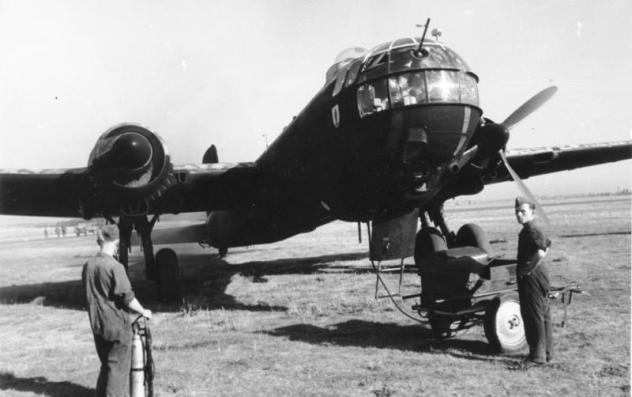 Heinkel He 177 - 1943.
Heinkel He 177 - 1943.
© Keiner Bundesarchiv Bild 101I-674-7767-09
(Cette image est soumise aux droits de Creative Commons Attribution ShareAlike 3.0 Germany License)
(This picture is licensed under Creative Commons Attribution ShareAlike 3.0 Germany License)
 Début décembre 1942, l'engagement en urgence, des quelques He 177 disponibles (20 avions - dont 6 seulement seront utilisables - du I/KG 50) qui seront transférés au sud de la Russie à Zaporozhye pour participer au pont aérien de Stalingrad (approvisionnement de la 6e Armée encerclée) est un désastre ; l'avion transporte très peu (il n'a pas été conçu pour ça, contrairement au He 111) et n'est pas adapté à l'évacuation des blessés. Il prend feu malgré des températures de -30°.
Début décembre 1942, l'engagement en urgence, des quelques He 177 disponibles (20 avions - dont 6 seulement seront utilisables - du I/KG 50) qui seront transférés au sud de la Russie à Zaporozhye pour participer au pont aérien de Stalingrad (approvisionnement de la 6e Armée encerclée) est un désastre ; l'avion transporte très peu (il n'a pas été conçu pour ça, contrairement au He 111) et n'est pas adapté à l'évacuation des blessés. Il prend feu malgré des températures de -30°.
In early December, 1942, the shipment in emergency of available He 177s (20 aircrafts - only 6 will be used - from I/KG 50) which were transfered to southern Russia at Zaporozhye to participate to the airlift of Stalingrad (supply of the encircled 6th Army) is a disaster : the plane carry a small payload (it was not designed for that, contrary to He 111) and is not adapted to the evacuation of wounded troops. It catches fire despite temperatures of -30 °.
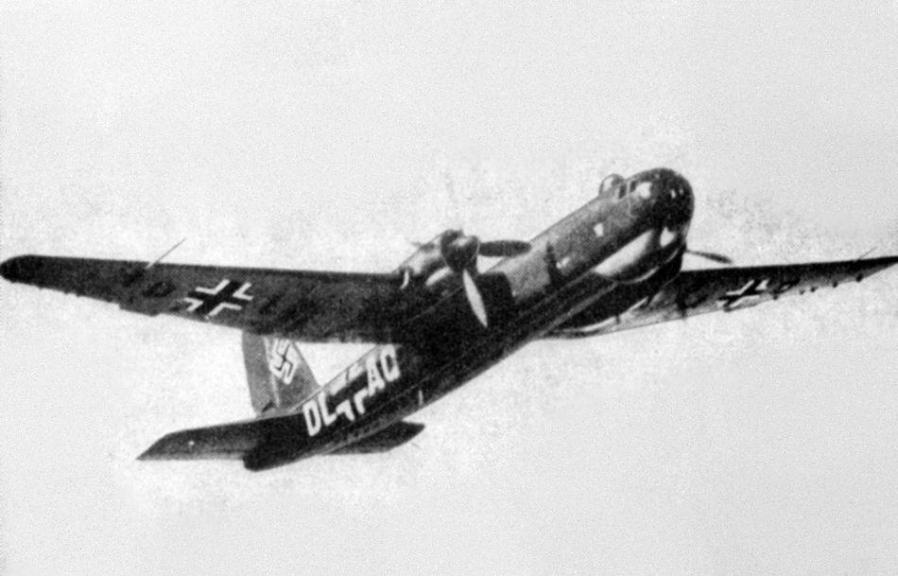
Heinkel He 177 A-02 (pre-production) "DL+AQ"
Photo : U.S. War Department publication TM-E 30-451 (domaine public - public domain) -
C'est pourquoi les He 177 seront renvoyés à des missions de bombardement et d'attaque de DCA en support de la Wehrmacht dans la périphérie de Stalingrad. Seulement treize missions ont été effectuées et sept He 177 se sont écrasés en flammes sans que ce soit imputable à l'ennemi. A la première mission, le Gruppenkommandeur du I/KG 50, le Major Kurt Scheede, fut porté disparu.
That is why the He 177s reverted to bombing and flak-suppression missions in support of the Wehrmacht in the vicinity of Stalingrad. Only thirteen missions were flown and seven of the He 177's crashed in flames without any action attributable to the enemy. At the first mission, the Gruppenkommandeur of I/KG 50, Major Kurt Scheede, was lost.
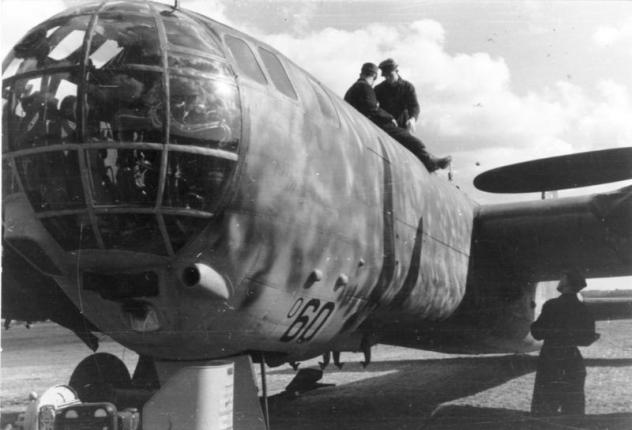 Russie 1943 - Russia 1943 © Heise Bundesarchiv Bild 101I-461-0220-07
Russie 1943 - Russia 1943 © Heise Bundesarchiv Bild 101I-461-0220-07
(Cette image est soumise aux droits de Creative Commons Attribution ShareAlike 3.0 Germany License)
(This picture is licensed under Creative Commons Attribution ShareAlike 3.0 Germany License)
 En février 1943, des He 177 arrivent au I/KG 4 et en mai au IV(Erg)/KG 100 (toujours pour de la mise au point). En septembre 1943, le I/KG 50 devient II/KG 40 et l'ErgSt/KG 50 est rebaptisé IV(Erg)/KG 40, tandis qu'en octobre le I/KG 4 devient I/KG 100.
En février 1943, des He 177 arrivent au I/KG 4 et en mai au IV(Erg)/KG 100 (toujours pour de la mise au point). En septembre 1943, le I/KG 50 devient II/KG 40 et l'ErgSt/KG 50 est rebaptisé IV(Erg)/KG 40, tandis qu'en octobre le I/KG 4 devient I/KG 100.
In February, 1943, He 177s are affected to I/KG 4 and in May to the IV(Erg)/KG 100 (always for the development). In September, 1943, the I/KG 50 becomes II/KG 40 and the ErgSt/KG 50 is renamed IV(Erg)/KG 40, whereas in October, the I/KG 4 becomes I/KG 100.
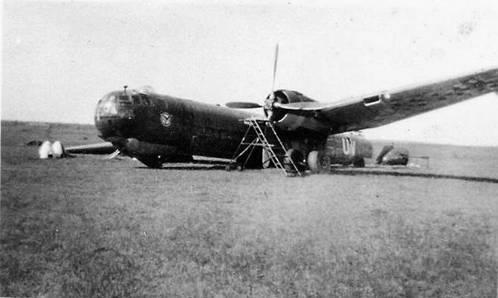 Heinkel He 177 Flugzeugführerschule (B) 15, Avord (France), 1943
Heinkel He 177 Flugzeugführerschule (B) 15, Avord (France), 1943
Le train s'est affaissé à l'atterrissage. The landing gear subsided during landing.
Photos : auteur inconnu - author unknown
L'intention de l'OKL est alors de constituer 2 escadres (à 3 escadrilles chacune) avec le nouveau He 177A-5 (qui s'enflamme moins facilement) : une de bombardement classique, le KG 100 et une de bombardement naval, le KG 40 (dont les quadrimoteurs FW 200 participent depuis 1940 à la bataille de l'Atlantique mais souffrent de plus en plus).
The intention of the OKL is to constitute 2 Groups (with 3 Squadrons each) with the new He 177A-5 (which catches fire less easily) : one for classic bombing, the KG 100 and one for naval bombing, the KG 40 (which four-engines planes FW 200 participates since 1940 to the Battle of the Atlantic but suffer more and more).
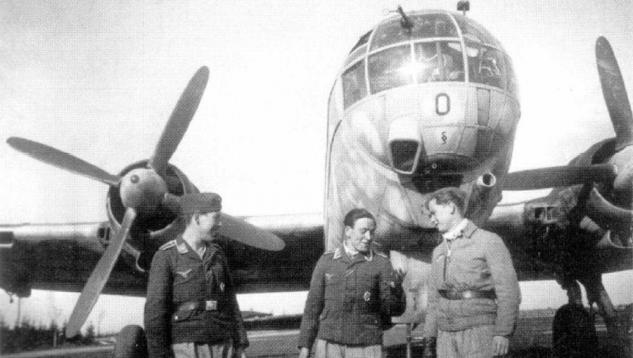 Heinkel He 177 A-5, 1./KG 40
Heinkel He 177 A-5, 1./KG 40
Photos : auteur inconnu - author unknown
 De fait, le I/KG 40 passe sur He 177 en novembre 1943 et le II/KG 100 au printemps 1944.
De fait, le I/KG 40 passe sur He 177 en novembre 1943 et le II/KG 100 au printemps 1944.
Then, the I / KG 40 converts to the He 177 in November, 1943 and the II/KG 100 in spring, 1944.
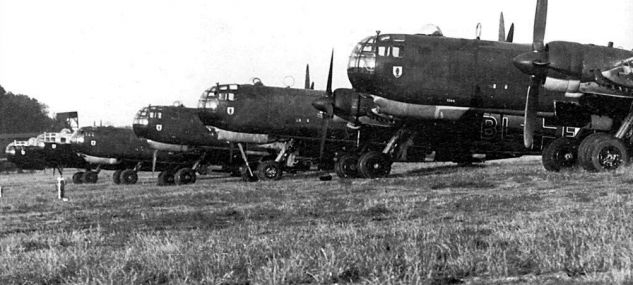 Heinkel He 177
Heinkel He 177
Photos : auteur inconnu - author unknown
Les He 177 participèrent à l'offensive nocturne contre l'Angleterre du début 1944 (Operation Steinbock de janvier à mai 1944) : les unités impliquées furent le I. Gruppe du KG 40 et le 3.Staffel du KG 100 : en tout 46 avions dont 41 disponibles à Rheine (Osnabrück) et Chateaudun (Orléans).
The He 177s were engaged in the night-offensive against England in the early 1944 (Operation Steinbock from January to May 1944) : the units engaged were the I. Gruupe of KG 40 and 3.Staffel of KG 100. A total of 46 aircrafts including 41 available based at Rheine (Osnabrück - Germany) and Chateaudun (Orléans - France).
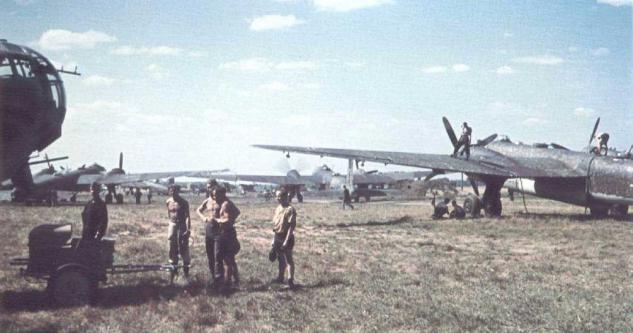
Heinkel He 177 2./KG 40- Königsberg, 1944 - © Bert Hartmann LuftArchiv.de
Un exemple souvent cité est une attaque de nuit sur l'Angleterre : 13 avions décollèrent, 1 rata son décollage en raison d'un pneu éclaté, 8 retournèrent à cause de moteurs en surchauffe ou enflammés, et parmi les quelques uns qui arrivèrent sur l'objectif, deux furent détruits par des chasseurs de nuit ennemis.
An example often cited is a night attack on England : 13 aircraft took off, 1 failed to take off due to a burst tire, 8 returned with burning or overheating engines, and of the few that got to their target two were destroyed by enemy night fighters.
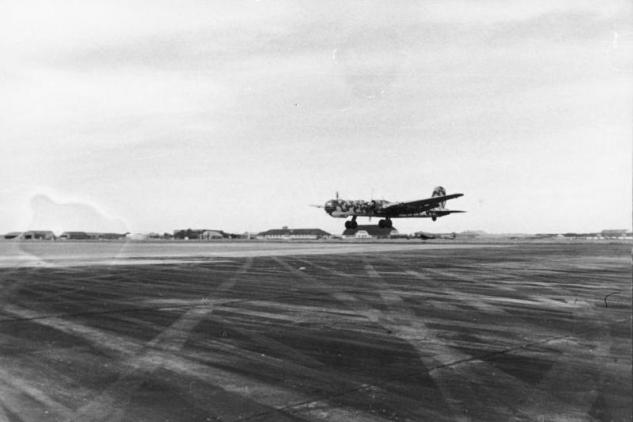 Heinkel He 177 - 1944 © Bundesarchiv, Bild 101I-676-7972A-04 / Blaschka / CC-BY-SA
Heinkel He 177 - 1944 © Bundesarchiv, Bild 101I-676-7972A-04 / Blaschka / CC-BY-SA
(Cette image est soumise aux droits de Creative Commons Attribution ShareAlike 3.0 Germany License)
(This picture is licensed under Creative Commons Attribution ShareAlike 3.0 Germany License)

La première attaque eut lieu dans la nuit du 21 janvier : 2 vagues de 12 He 177 séparées de 8 heures. Lors de la première vague, un He 177 du I./KG 40 fut abattu près de Haslemere (Surrey) par le Flying Officer H. Kemp du Squadron 151 sur Mosquito : deux membres d'équipage furent tués et les quatre autres capturés. Lors de la seconde vague, un He 177 du I./KG 40 fut abattu par la chasse de nuit et un autre du 3./KG 100 par la Flak de Dieppe (!).
The first attack was led during the night of January 21st : 2 waves of 12 He 177 separated by 8 hours. During the first wave, a He 177 of I./KG 40 was shot down near Haslemere (Surrey) by the Flying Officer H. Kemp of Squadron 151 with a Mosquito : two crew members were killed and four others captured. During the second wave, a He 177 of I./KG 40 was shot down by night fighters and another one of 3./KG 100 by the Flak in Dieppe (!).
 Heinkel He 177 - Opération Steinbock - Steinbock operation.
Heinkel He 177 - Opération Steinbock - Steinbock operation.
artiste inconnu - artist unknown
Le 29 janvier, 20 He 177 bombardent Londres au sein d'un force de 285 bombardiers : aucune perte. Le 3 février, 6 He 177 du 3./KG 100 participent à une nouvelle opération et reviennent à Rheine sans perte. Le 13 février, le 2./KG 100 rejoint la 3./KG 100 à Rheine pour former le I./KG 100. La dernière mission sur Londres impliqua le 18 avril 5 He 177 du I./KG 100 de Rheine avec pour cible le quartier de Tower Bridge. Un He 177 fut abattu par un Mosquito du Sqn 410.
On January 29th, 20 He 177 attacked London among a group of 285 bombers : no loss. On February 3rd, 6 He 177 of 3./KG 100 participated in a new operation and returned to Rheine without any loss. On February 13th, the 2./KG 100 reached the 3./KG 100 in Rheine to create the I./KG 100. The last mission over London involved 5 He 177 of I./KG 100 from Rheine with the quarter of Tower Bridge as a target. One He 177 was shot down by a Mosquito of 410 Sqn.
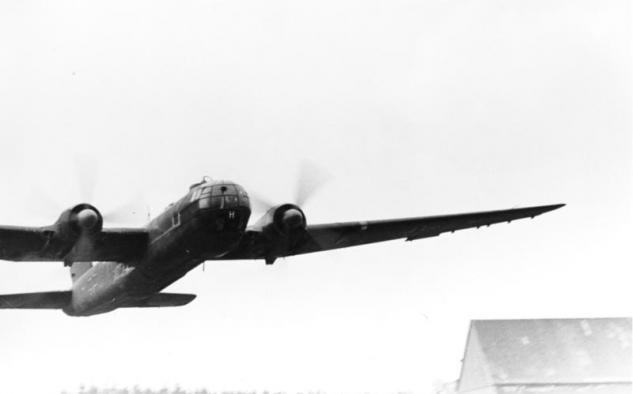 Heinkel He 177 - Janvier/January 1944 © Bundesarchiv, Bild 101I-668-7163-24A / Linden / CC-BY-SA
Heinkel He 177 - Janvier/January 1944 © Bundesarchiv, Bild 101I-668-7163-24A / Linden / CC-BY-SA
(Cette image est soumise aux droits de Creative Commons Attribution ShareAlike 3.0 Germany License)
(This picture is licensed under Creative Commons Attribution ShareAlike 3.0 Germany License)
Lors de l'Opération Steinbock, avec un taux moyen de perte de 60 % pour chaque type d'appareil utilisé (Do 217, He 111, Ju 88, Ju 188), le He 177A-5 avait un taux de perte inférieur de 10 %, en faisant ainsi le meilleur bombardier utilisé pendant cette campagne. Des équipages expérimentés étaient capables d'emporter une charge utile de 5 600 kg (de 12,345 livres) lors de ces missions.
During Operation Steinbock, with an average loss rate of 60% for each type used (Do 217, He 111, Ju 88, Ju 188), the He 177A-5s had a loss rate well below 10%, making them the best bomber used in this campaign. Experienced crews were able to carry a 5,600 kg (12,345 lb) payload on these missions.
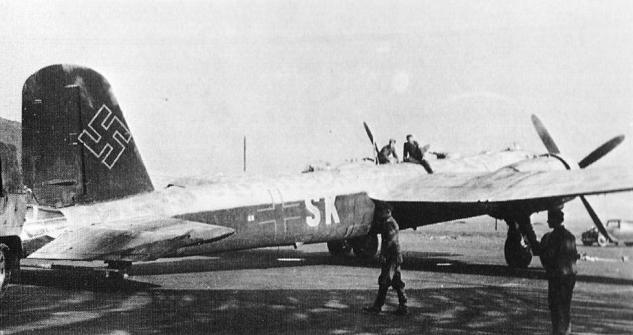 Heinkel He 177A-3/R2 "ND+SK" (W. Nr. 135014) - KG/100, 1944.
Heinkel He 177A-3/R2 "ND+SK" (W. Nr. 135014) - KG/100, 1944.
Photo : auteur inconnu - author unknown
 La tactique standard du He 177 était de grimper à son plafond pratique avant de passer la côte britannique, d'effectuer ensuite le reste de la mission en descente permanente par un piqué léger, qui permettait à l'avion d'atteindre une vitesse de plus de 690 km/h (428 mph). La vitesse plus élevée et le changement constant d'altitude rendaient l'avion plus difficile à intercepter, augmentant sa capacité à survivre, mais la précision et l'efficacité de bombardement en furent très diminuées.
La tactique standard du He 177 était de grimper à son plafond pratique avant de passer la côte britannique, d'effectuer ensuite le reste de la mission en descente permanente par un piqué léger, qui permettait à l'avion d'atteindre une vitesse de plus de 690 km/h (428 mph). La vitesse plus élevée et le changement constant d'altitude rendaient l'avion plus difficile à intercepter, augmentant sa capacité à survivre, mais la précision et l'efficacité de bombardement en furent très diminuées.
Standard tactics for the He 177 was to climb to its service ceiling before crossing the British coast, then carry out the rest of the mission in a shallow full power dive, which allowed the aircraft to reach a speed of over 690 km/h (428 mph). The higher speed and constant change of altitude made the aircraft harder to intercept, increasing its survivability, but greatly decreased bombing accuracy and effectiveness.
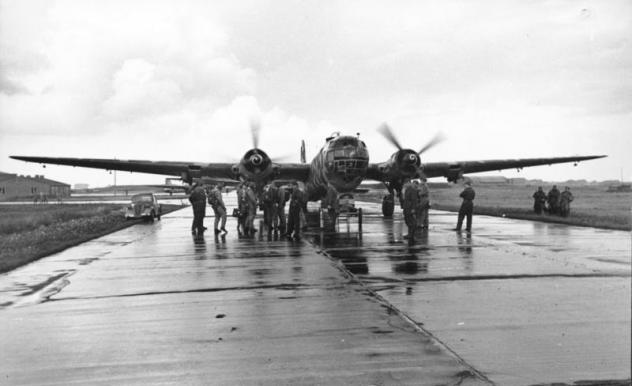 He 177 A-5 - II./KG 100 - Aalborg © Bundesarchiv Bild 101I-676-7969A-23
He 177 A-5 - II./KG 100 - Aalborg © Bundesarchiv Bild 101I-676-7969A-23
(Cette image est soumise aux droits de Creative Commons Attribution ShareAlike 3.0 Germany License)
(This picture is licensed under Creative Commons Attribution ShareAlike 3.0 Germany License)
Leur engagement dans l'Atlantique est moins brillant malgré l'utilisation de bombes téléguidées Hs 293 (souvent sabotées par la Résistance française). L'OKL renonce alors à achever la conversion des 2 escadres concernées : les III/KG 40 et III/KG 100, qui avaient reçu quelques He 177, les cèdent aux autres groupes et retrouvent leur anciens avions.
Their commitment in the Atlantic theatre is not brilliant, despite the use of guided bombs Hs 293 (often sabotaged by the French Resistance). The OKL gives then up finishing the conversion of 2 concerned groups : the III / KG 40 and III / KG 100, which had received some He 177, shipped them to the other groups and got back their former aircrafts.
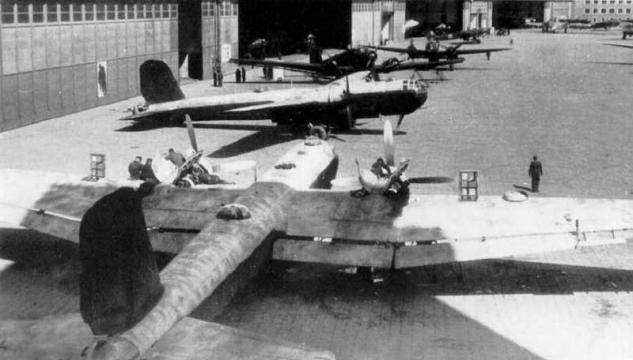 Heinkel He 177A-5 - Munich Riem, Mars 1944 - March 1944 - Photo : auteur inconnu - author unknown
Heinkel He 177A-5 - Munich Riem, Mars 1944 - March 1944 - Photo : auteur inconnu - author unknown

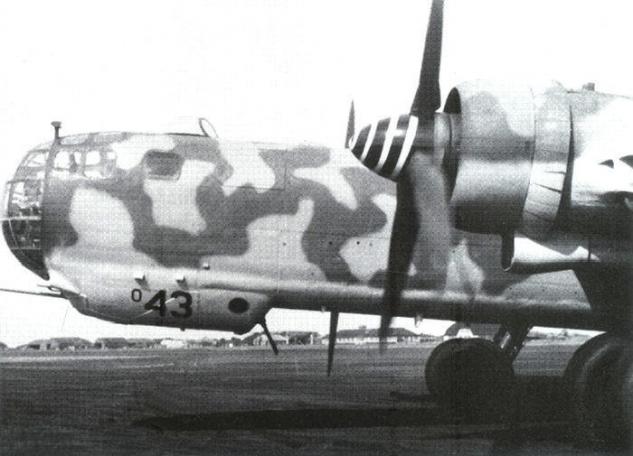 Heinkel He 177 A-5 "6N+HM" - 4./KG 40 - Photo : auteur inconnu - author unknown
Heinkel He 177 A-5 "6N+HM" - 4./KG 40 - Photo : auteur inconnu - author unknown
L'OKL décide alors d'entamer une offensive de bombardements stratégiques en Russie : les usines russes sont très loin du front, hors de portée des He 111 et Ju 88.
The OKL makes the decision to start an offensive of strategic bombing in Russia: the Russian factories are very far from the front, out of reach for the He 111 and Ju 88.
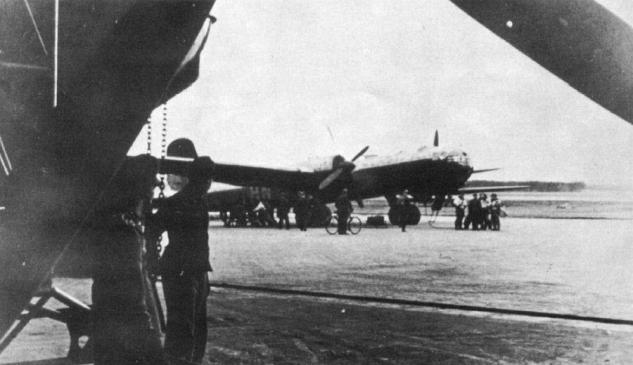 Heinkel He 177 - 1./KG 1 - Photo : auteur inconnu - author unknown
Heinkel He 177 - 1./KG 1 - Photo : auteur inconnu - author unknown
Le KG 1, une escadre sur Ju 88A-4 qui végète depuis l'automne 1943, en est chargé. Les I/KG 1 et II/KG 1 passent donc sur He 177 en février 1944, et le IV(Erg)/KG 1 en reçoit en mars.
The KG 1, a group equipped with Ju 88A-4 which vegetates since autumn, 1943, will be charged of it. The I / KG 1 and II / KG 1 then convert to He 177 in February, 1944, and the IV(Erg/KG 1)in March.
 Heinkel He 177 A-5/R6 - II./KG 1 "Hindenburg"
Heinkel He 177 A-5/R6 - II./KG 1 "Hindenburg"
Prowehren, Prusse Orientale, mai 1944 - Prowehren, East Prussia, May, 1944.
artiste inconnu - artist unknown
 Avec la redésignation du I/KG 100 en III/KG 1 fin mai, la Luftwaffe dispose enfin d'une escadre complète (3 groupes de combat + 1 Erganzung) d'environ 90 He 177 commandée par l'Oberstleutnant Horst von Riesen. Ne restent que les I/KG 40 et II/KG 40 sur l'Atlantique, renforcés en avril 1944 par une escadrille météo, le Wekusta ObdL 2 (devenant peu après Wekusta OKL 2).
Avec la redésignation du I/KG 100 en III/KG 1 fin mai, la Luftwaffe dispose enfin d'une escadre complète (3 groupes de combat + 1 Erganzung) d'environ 90 He 177 commandée par l'Oberstleutnant Horst von Riesen. Ne restent que les I/KG 40 et II/KG 40 sur l'Atlantique, renforcés en avril 1944 par une escadrille météo, le Wekusta ObdL 2 (devenant peu après Wekusta OKL 2).
With the I / KG 100 beign renamed in III / KG 1 at the end of May, the Luftwaffe has finally a complete group (3 squadrons + 1 Erganzung) of about 90 He 177, led by Oberstleutnant Horst von Riesen. The I / KG 40 and II / KG 40 remain on the Atlantic front, strengthened in April, 1944 by a meteorological squadron, the Wekusta Obd 2 (becoming soon after Wekusta OKL 2).
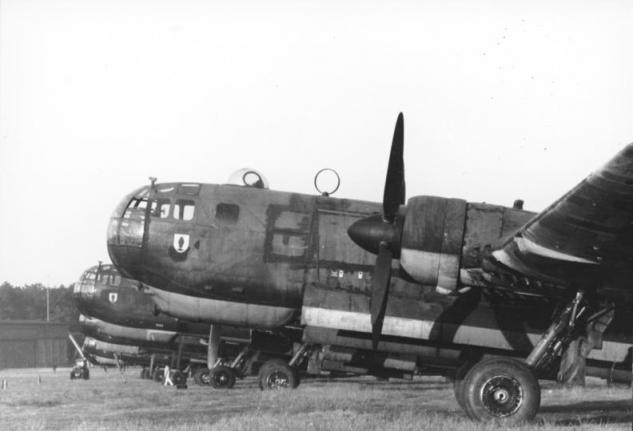 Heinkel He 177 A-5 - 1943/1944 © Bundesarchiv Bild 101I-674-7766-07
Heinkel He 177 A-5 - 1943/1944 © Bundesarchiv Bild 101I-674-7766-07
(Cette image est soumise aux droits de Creative Commons Attribution ShareAlike 3.0 Germany License)
(This picture is licensed under Creative Commons Attribution ShareAlike 3.0 Germany License)
L'offensive en Russie, de mai à juillet 1944, est un incontestable succès technique : les formations de He 177 atteignent toutes leurs objectifs pratiquement sans pertes car les chasseurs russes, conçus pour la basse altitude, sont incapables de les rejoindre (de plus, l'URSS n'a pas de couverture radar).
The offensive in Russia, from May till July, 1944, is a real technical success: the groups of He 177 reach all their objectives practically without losses because the Russian fighters, designed for low altitudes, cannot climb to them (furthermore, the USSR has no radar cover).
 Heinkel He 177 A-5 - II./KG 40 - Bordeaux - Mérignac (France)
Heinkel He 177 A-5 - II./KG 40 - Bordeaux - Mérignac (France)
auteur inconnu - author unknown
 Le 6 juin 1944, quelques He 177 (II./KG 40) participèrent sans grand résultat à une attaque sur l'armada alliée. Un He 177 fut battu par un Mosquito du Sqn 456 australien (pilote Wing Cr Keith Hampshire et navigateur Flt Lt Condon).
Le 6 juin 1944, quelques He 177 (II./KG 40) participèrent sans grand résultat à une attaque sur l'armada alliée. Un He 177 fut battu par un Mosquito du Sqn 456 australien (pilote Wing Cr Keith Hampshire et navigateur Flt Lt Condon).
On June 6th, 1944, some He 177 (II./KG 40) participated without important result to an attack on the allied armada. A He 177 was shot down by a Mosquito of Australian 456 Sqn (pilot Wing Cr Keith Hampshire and navigator Flt Lt Condon).

Heinkel He 177 A-3/R1 (WNr. 5175) - I./KG 40
Faßberg (Basse-Saxe), automne 1943 - Faßberg (Lower Saxony), Autumn, 1943
© Jean-Marie Guillou
Le débarquement de Normandie oblige la Luftwaffe à abandonner en juin la façade atlantique : le I/KG 40 est dissous dès juillet et le II/KG 40 replié en Allemagne est converti sur Me 262 en octobre 1944.
The landing in Normandy obliged Luftwaffe to leave in June the Atlantic coast : the I/KG 40 was dissolved in July and the II / KG 40, which was back in Germany was converted on Me 262 in October, 1944.
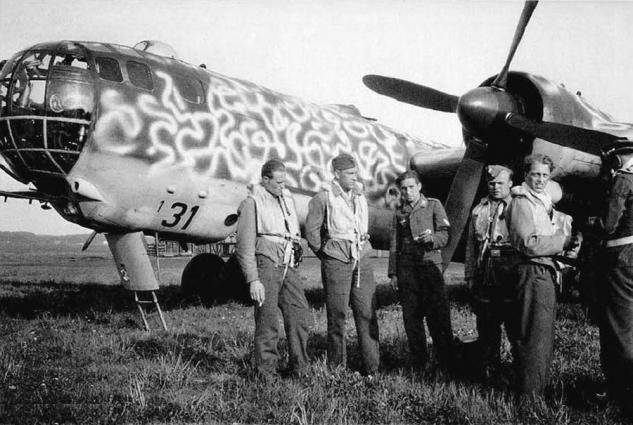 Heinkel He 177 A-3 "6N+DN"- 5./KG 100
Heinkel He 177 A-3 "6N+DN"- 5./KG 100
Ofw Willy Nierderstadt, pilote - Ofw. Paul Balke, mécanicien - Ogfr. Hans Balbach, mitrailleur - Gefr. Adolf Dops, mitrailleur - Uffz Hans Fontius, radio - Staffelkapitän Hptm. Hans Schucke.
Ofw Willy Nierderstadt, pilot - Ofw. Paul Balke, mechanic - Ogfr. Hans Balbach, machine gunner - Gefr. Adolf Dops, machine gunner - Uffz Hans Fontius, radio-operator - Staffelkapitän Hptm. Hans Schucke.
Photo : auteur inconnu - author unknown Heinkel He 177 A-3 "6N+DN"- 5./KG 100 - auteur inconnu - author unknown
Heinkel He 177 A-3 "6N+DN"- 5./KG 100 - auteur inconnu - author unknown
 Le IV(Erg)/KG 40 devient ErgKGr He 177 en juillet 1944, récupérant une escadrille du IV(Erg)/KG 100; il est même porté à 4 escadrilles au lieu de 3. Quant au Wekusta OKL 2, il est dissous en septembre. Le II/KG 100 cesse à peu près toute activité mais est conservé tandis que le IV(Erg)/KG 100 est dissous en août-septembre 1944.
Le IV(Erg)/KG 40 devient ErgKGr He 177 en juillet 1944, récupérant une escadrille du IV(Erg)/KG 100; il est même porté à 4 escadrilles au lieu de 3. Quant au Wekusta OKL 2, il est dissous en septembre. Le II/KG 100 cesse à peu près toute activité mais est conservé tandis que le IV(Erg)/KG 100 est dissous en août-septembre 1944.
The IV(Erg/KG 40) became ErgKGr He 177 in July, 1944, getting back a squadron of IV (Erg/KG 100) ; It was even enlarged at 4 squadrons instead of 3. As for Wekusta OKL 2, it was dissolved in September. The II / KG 100 stopped any activity but was kept whereas the IV(Erg)/KG 100 was dissolved in August-September, 1944.
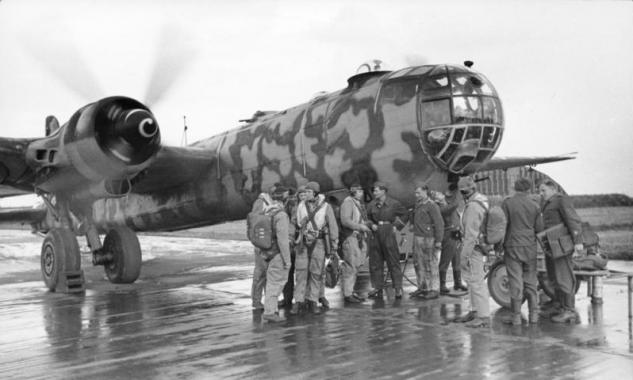 He 177 A-5/R2 - II./KG 100, Aalborg
He 177 A-5/R2 - II./KG 100, Aalborg
© Schroeder Bundesarchiv Bild 101I-676-7969A-25
(Cette image est soumise aux droits de Creative Commons Attribution ShareAlike 3.0 Germany License)
(This picture is licensed under Creative Commons Attribution ShareAlike 3.0 Germany License)
Sur le front Est, l'offensive russe du 22 juin 1944 conduit à utiliser le He 177 pour l'appui au sol mais les résultats sont insignifiants pour des pertes élevées. Un ordre insensé de Goering fut donné à von Riesen d'attaquer les chars Russes à basse altitude avec ses He 177 : une dizaine d'avions sur 40 furent abattus par la chasse Russe lors d'une seule opération.
On the Eastern front, the Russian offensive of June 22nd, 1944 involves the use of the He 177 for ground support but the results are insignificant for losses high. An insane order of Goering was given to von Riesen to attack the Russian tanks at low altitude with his He 177 : about ten aircrafts on 40 were shot down by Russian fighters during this operation.
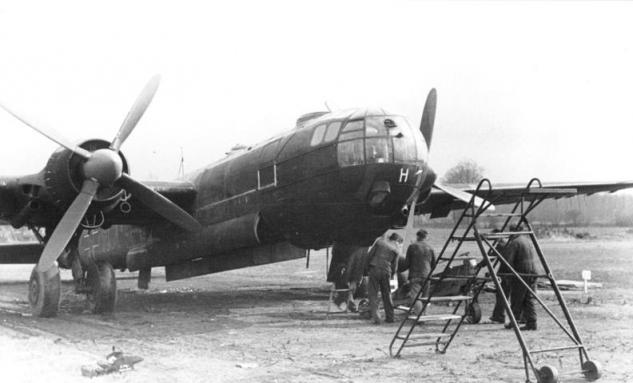 Heinkel He 177 A-3/R2 , 2./KG 100 - Printemps 1944 - Spring 1944
Heinkel He 177 A-3/R2 , 2./KG 100 - Printemps 1944 - Spring 1944
© Bundesarchiv Bild 101I-668-7164-35A
(Cette image est soumise aux droits de Creative Commons Attribution ShareAlike 3.0 Germany License)
(This picture is licensed under Creative Commons Attribution ShareAlike 3.0 Germany License)
 Par ailleurs, la perte en août des pétroles de Roumanie étrangle toute la Wehrmacht : les premières victimes de cette pénurie seront les He 177, gros consommateurs. Un raid lointain de 80 He 177 consommait environ 500 tonnes d'essence, soit presque la production quotidienne du Reich de l'époque.
Par ailleurs, la perte en août des pétroles de Roumanie étrangle toute la Wehrmacht : les premières victimes de cette pénurie seront les He 177, gros consommateurs. Un raid lointain de 80 He 177 consommait environ 500 tonnes d'essence, soit presque la production quotidienne du Reich de l'époque.
Moreover, the loss in August of oil wells of Rumania affects all the Wehrmacht : the first victims of this shortage were the He 177, big consumers. An operation with 80 He 177 consumed approximately 500 tons of petrol, which was almost the daily production of the Reich at this period.
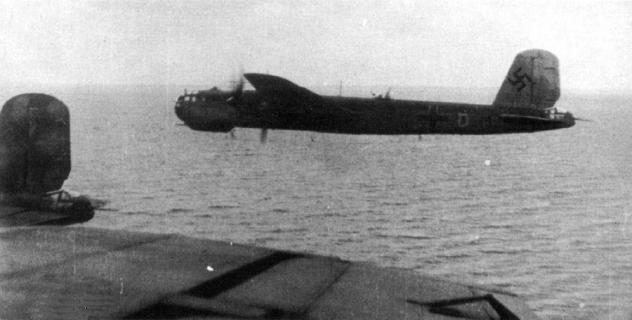 Heinkel He 177 II./KG 40
Heinkel He 177 II./KG 40
Photo : auteur inconnu - author unknown
Les opérations cessent, les avions rapatriés en Allemagne et les 4 groupes du KG 1 sont dissous. Le dernier He 177 fabriqué est livré à la Luftwaffe en août 1944.
The operations stopped, aircrafts flew back to Germany and the 4 groups of KG 1 were dissolved. The last manufactured He 177 was delivered to the Luftwaffe in August, 1944.
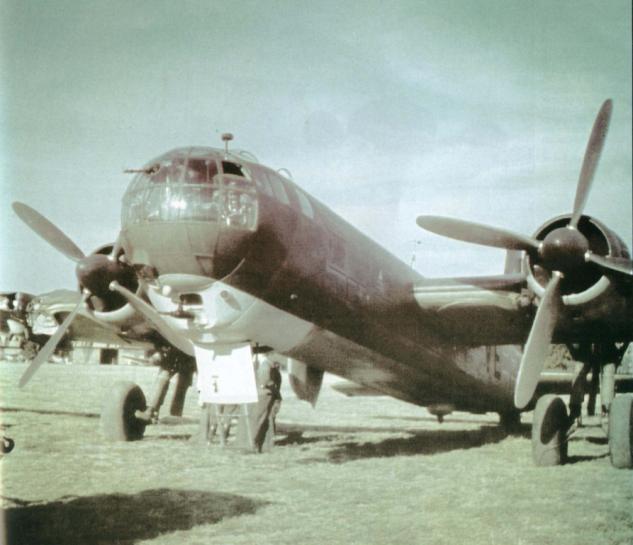 Heinkel He 177 - Photo : auteur inconnu - author unknown
Heinkel He 177 - Photo : auteur inconnu - author unknown
 En octobre 1944, l'ErgKGr He 177 redevient IV(Erg)/KG 40 et doit passer sur Me 262 mais sa 4e escadrille est conservée en tant qu'ErgSt He 177, devenant ErguESt FK avant dissolution en novembre 1944. Il reste le II/KG 100 qui n'est dissous qu'en février 1945. Indépendamment de ces unités qui utilisèrent effectivement l'appareil, les registres de la Luftwaffe montrent que les I/KG 3, II/KG 3, I/KG 54 et II/KG 54 étaient prévus comme devant passer sur He 177.
En octobre 1944, l'ErgKGr He 177 redevient IV(Erg)/KG 40 et doit passer sur Me 262 mais sa 4e escadrille est conservée en tant qu'ErgSt He 177, devenant ErguESt FK avant dissolution en novembre 1944. Il reste le II/KG 100 qui n'est dissous qu'en février 1945. Indépendamment de ces unités qui utilisèrent effectivement l'appareil, les registres de la Luftwaffe montrent que les I/KG 3, II/KG 3, I/KG 54 et II/KG 54 étaient prévus comme devant passer sur He 177.
In October, 1944, the ErgKGr He 177 becomes again IV(Erg/KG 40) and has to convert on Me 262 but its 4th squadron is kept as ErgSt He 177, becoming ErguESt FK before dissolution in November, 1944. It remains the II/KG 100 which is dissolved only in February, 1945. Apart from these units which used effectively the aircraft, the registers of Luftwaffe show that I/KG 3, II/KG 3, I/KG 54 and II/KG 54 were supposed to convert on He 177.
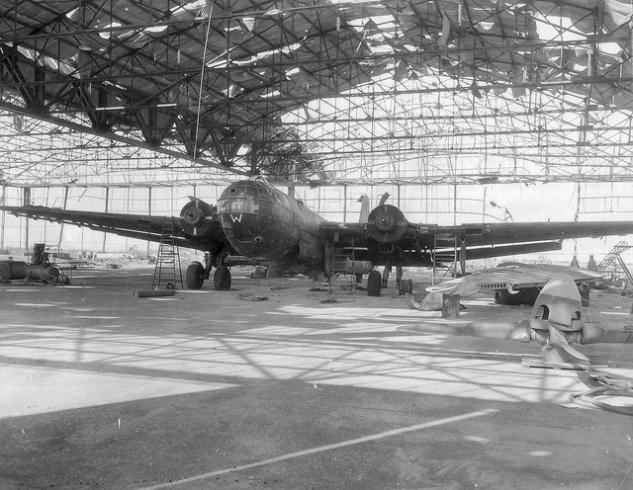 Heinkel He 177 - Photo : auteur inconnu - author unknown
Heinkel He 177 - Photo : auteur inconnu - author unknown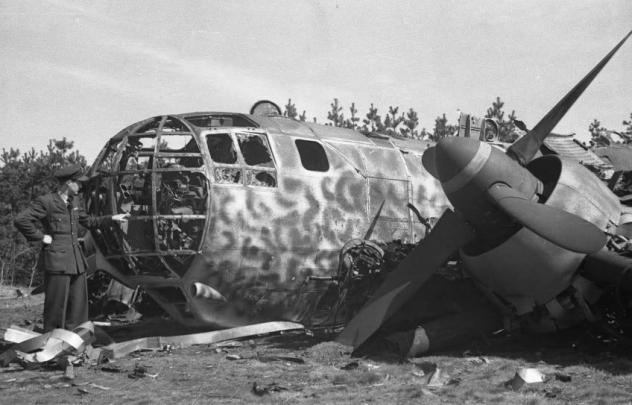 Heinkel He 177 - Photo : auteur inconnu - author unknown
Heinkel He 177 - Photo : auteur inconnu - author unknown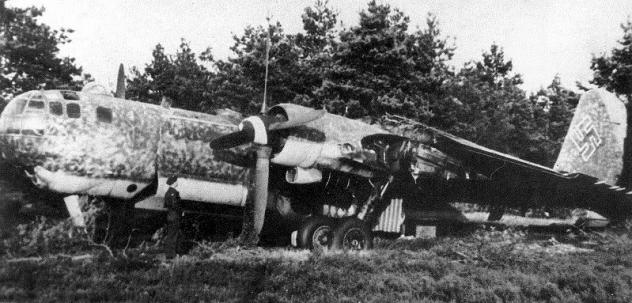 Heinkel He 177 - Photo : auteur inconnu - author unknown
Heinkel He 177 - Photo : auteur inconnu - author unknown Heinkel He 177 A-5 "6N+FN", 2./KG 100
Heinkel He 177 A-5 "6N+FN", 2./KG 100
Aalborg, Danemark, mi-1944 - Aalborg, Denmark, mid-1944 - auteur inconnu - author unknown

Heinkel He 177 "6N+HK", 1. (2. ?)/KG 100 - auteur inconnu - author unknown
Les unités qui utilisèrent le He 177
Operators which used the He 177
• Fernkampfgeschwader 50

Heinkel He 177 A-1, 3./FKG 50 - Zaporozhye-Süd, Ukraine - Janvier 1943 - January 1943
© Jean-Marie Guillou
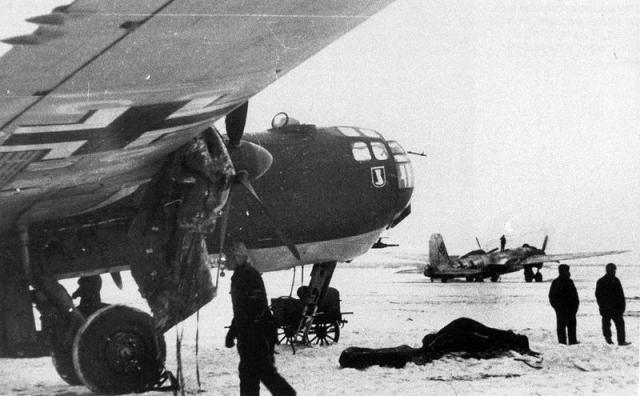
Heinkel He 177 A-1, FKG 50, Stalingrad - Au fond le E8+HL - At the rear, the E8+HL
Photo : auteur inconnu - author unknown
• Kampfgeschwader 1
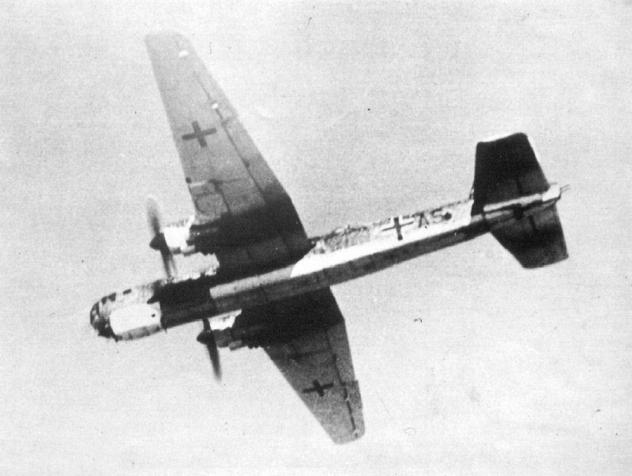 Heinkel He 177 A-5, III/KG 1 - Front de l'est, 1944 - Eastern front, 1944
Heinkel He 177 A-5, III/KG 1 - Front de l'est, 1944 - Eastern front, 1944
Photo : auteur inconnu - author unknown He 177 A-5/R2 - Stab/KG 1 - Prusse Orientale, été 1944 - East Prussia, Summer 1944.
He 177 A-5/R2 - Stab/KG 1 - Prusse Orientale, été 1944 - East Prussia, Summer 1944.
Artiste inconnu - artist unknown - source : http://wp.scn.ru/en/ww2/b/446
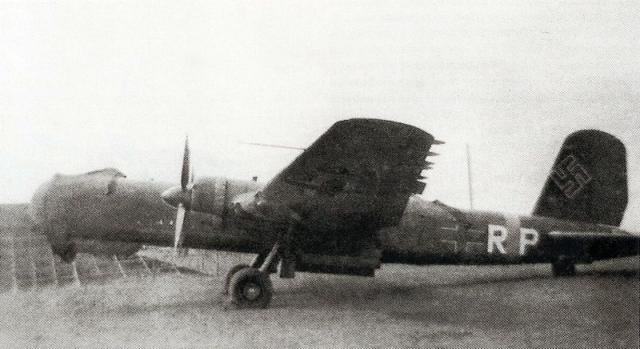
Heinkel He 177 A-3, V4+RP - 6/KG 1 - Burg (Magdeburg)
Photo : auteur inconnu - author unknown
• Kampfgeschwader 4
 He 177 A-3/R2 - "5J+QK" 2./KG 4 - France, avril 1944 - France, April 1944.
He 177 A-3/R2 - "5J+QK" 2./KG 4 - France, avril 1944 - France, April 1944.
Artiste inconnu - artist unknown - source : http://wp.scn.ru/en/ww2/b/446
• Kampfgeschwader 10
• Kampfgeschwader 40
 He 177 A-5 - II/KG 40 - Bordeaux-Merignac, France, 1944.
He 177 A-5 - II/KG 40 - Bordeaux-Merignac, France, 1944.
artiste inconnu - artist unknown
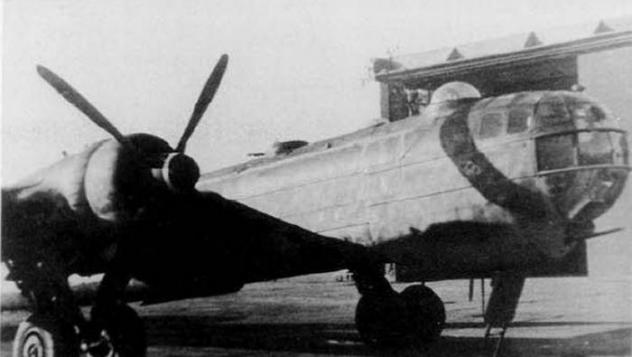
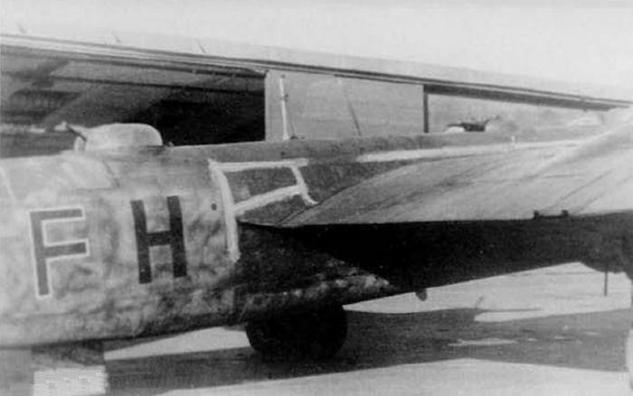 He 177 A-3 "F8+FH" - 1./KG 40- Bordeaux (France), 1943 - Photo : auteur inconnu - author unknown
He 177 A-3 "F8+FH" - 1./KG 40- Bordeaux (France), 1943 - Photo : auteur inconnu - author unknown
 He 177 A-3 "F8+FH" - 1./KG 40- Bordeaux (France), 1943 - auteur inconnu - author unknown
He 177 A-3 "F8+FH" - 1./KG 40- Bordeaux (France), 1943 - auteur inconnu - author unknown
 He 177 A-5/R6 - KG 40 - France, 1944.
He 177 A-5/R6 - KG 40 - France, 1944.
Artiste inconnu - artist unknown - source : http://wp.scn.ru/en/ww2/b/446

He 177 A-5 WkNr 550117, Oblt Jürgen Hanke - 5./KG 40 - France, 1944
Abattu dans la nuit du 6 au 7 juin par des Mosquito du SQN 456
Shot down in the night from 6th to 7th, June, by Mosquitos of SQN 456
© Vincent Dhorne

He 177 - 6./KG 40 - Bordeaux-Mérignac, France, 1943
© Jean-Marie Guillou
• Kampfgeschwader 100
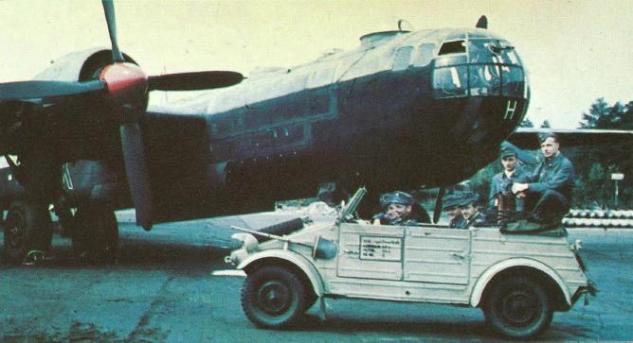 He 177 I./KG 100 - © Bert Hartmann LuftArchiv.de
He 177 I./KG 100 - © Bert Hartmann LuftArchiv.de
 He 177 A-5/R2 - 5./KG 100 - Danemark, été 1944 - Denmark, Summer 1944.
He 177 A-5/R2 - 5./KG 100 - Danemark, été 1944 - Denmark, Summer 1944.
Artiste inconnu - artist unknown - source : http://wp.scn.ru/en/ww2/b/446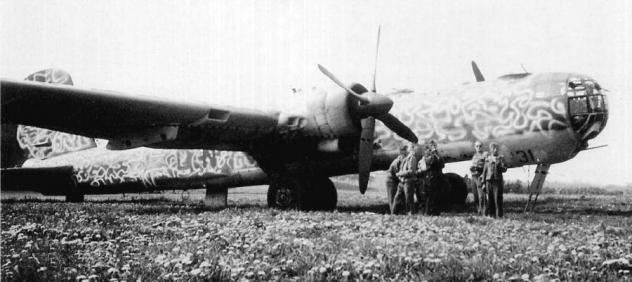 Heinkel He 177 A-3 "6N+DN"- 5./KG 100 - Aalborg, Danemark, début 1944 - Aalborg, Denmark, early 1944.
Heinkel He 177 A-3 "6N+DN"- 5./KG 100 - Aalborg, Danemark, début 1944 - Aalborg, Denmark, early 1944.
Photo : auteur inconnu - author unknown

He 177 A-3 - 2./KG 100 - Rheine (Westphalie), janvier 1944 - Rheine (Westphalia), January 1944.
© Jean-Marie Guillou
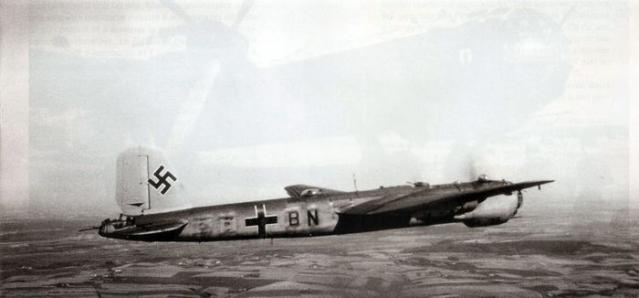
Heinkel He 177 A-5"6N+BN" WNr. 550124 - 5./KG 100 - Norvège - Norway
Photo : auteur inconnu - author unknown
 • Kampfgeschwader 200
• Kampfgeschwader 200
• Flugzeugführerschule (B) 15
• Flugzeugführerschule (B) 16

© Dekker Art Work - Thierry Dekker ( http://dekkerartwork.over-blog.com/)

© Jean-Marie Guillou
He 177 A-3/R2 (WNr 332143) - FFS B 16, Burg (Magdeburg)
Fin 1943. Cet appareil effectua un atterrissage forcé le 21 décembre 1943.
Late 1943. This aircraft made an emergency landing on the 21st december, 1943.
• Flugzeugführerschule (B) 31
• Wekusta/ObdL
Les autres utilisateurs - Other operators
France
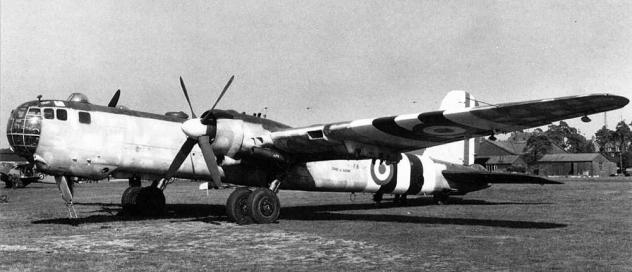 Heinkel He 177 - Source inconnue - Unknown source
Heinkel He 177 - Source inconnue - Unknown source
Les résistants français récupérèrent 3 Heinkel He 177 en divers état à Blagnac lors de la libération de Toulouse en août 1944 (probablement du KG 40). Les alliés en réclamèrent un pour évaluation et le He 177 A-5 n° 550061 fut remis en état. Un équipage Britannique commandé par le chef pilote d'essai du Royal Aircraft Establishment (Wing Cr Roly Falk) en pris possession et le ramena à Farnborough le 10 septembre.
The French resistance captured 3 Heinkel He 177 at Blagnac after the liberation of Toulouse in August, 1944 (probably KG 40). The allies required one for evaluation and the He 177 A-5 # 550061 was repaired. A British crew, led by the chief test pilot of the Royal Aircraft Establishment (Wing Cr Roly Falk) took it in charge and flew it back to Farnborough on September 10th.
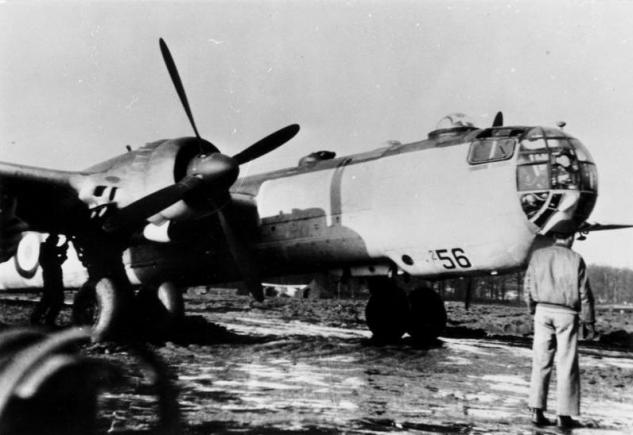 He 177 A-7 - Essais en France - Tests in France - 1945/46 © Bundesarchiv, Bild 146-1972-065-68 / CC-BY-SA
He 177 A-7 - Essais en France - Tests in France - 1945/46 © Bundesarchiv, Bild 146-1972-065-68 / CC-BY-SA
(Cette image est soumise aux droits de Creative Commons Attribution ShareAlike 3.0 Germany License)
(This picture is licensed under Creative Commons Attribution ShareAlike 3.0 Germany License)

Un second, le He 177 A-7 n° 550256 (un A-5 modifié sur chaîne), fut remis en état. D'abord destiné au CEV, cet avion fut finalement cédé aux américains. Le Colonel américian Watson, accompagné du Commandant Maurice Claisse, rapatria cet avion sur Villacoublay le 28 novembre.
A second one, the He 177 A-7 # 550256 (a A-5 modified on production line), was repaired. At first intended for the CEV, this aircraft was finally given to the Americans. The américian Colonel Watson, helped by Major Maurice Claisse, flew this aircraft back to Villacoublay on November 28th.
 Source inconnue - Unknown source
Source inconnue - Unknown source
Le 3e He 177 était un A-3 (WNr. inconnu mais se terminant par 30013) : il fut lentement remis en état et essayé 4 fois (du 20 juin au 20 septembre 1945) en catimini par Pierre Nadot, chef des essais en vol de la SNCASE, qui n'obtint pas les équipements d'essais nécessaires. Il fut ensuite conduit à Marignane le 2 octobre. Il y fut essayé 3 fois, son dernier essai ayant lieu en mai 1946. Il fut ensuite ferraillé.
The 3rd He 177 was a A-3 (WNr. unknown but ending by 30013) : it was reparied slowly and hardly tested 4 times (from June 20th till September 20th, 1945) by Pierre Nadot, chief test pilot of the SNCASE, who did not obtain the necessary test equipments. It was then flown to Marignane on October 2nd. It was tried there 3 times, the last test being done in May, 1946. It was then clattered.
 Heinkel He 177 - Source inconnue - Unknown source
Heinkel He 177 - Source inconnue - Unknown source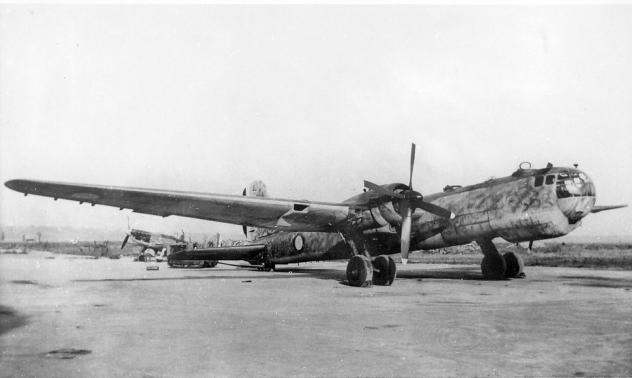 Heinkel He 177 - Source inconnue - Unknown source
Heinkel He 177 - Source inconnue - Unknown source
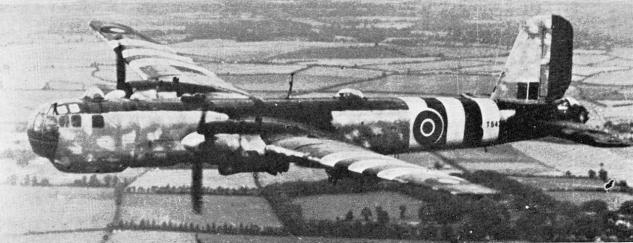 He 177 A-5 'TS439' © United Kingdom Government (domaine public - public domain)
He 177 A-5 'TS439' © United Kingdom Government (domaine public - public domain)
Le Royal Aircraft Establishment ("RAE Farnborough") essaya le He 177 A-5 n° 550061 cédé par les Français. Il fut repeint aux couleurs anglaises et rebaptisé TS439. Peu convaincus, les anglais démontérent l'avion et le cédèrent aux américains. Il fut envoyé en caisses par cargo aux USA.
The Royal Aircraft Establishment ("RAE Farnborough") tested the He 177 A-5 # 550061 given by the French. It was repainted with British roundels and serialled TS439. Not really convinced, the English dismounted the aircraft and gave it to the Americans. it was sent in containers by cargo boat in the USA.
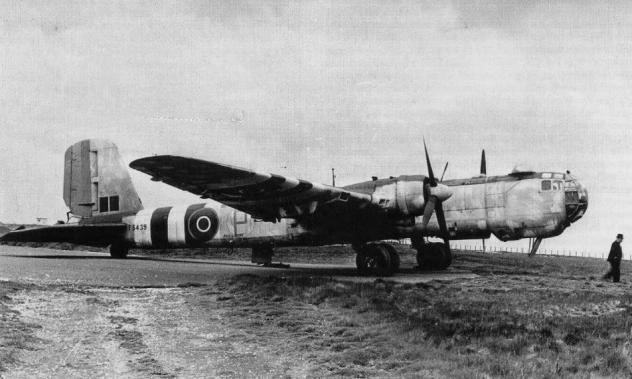 He 177 A-5 'TS439' - Photo : source inconnue - source unknown
He 177 A-5 'TS439' - Photo : source inconnue - source unknown
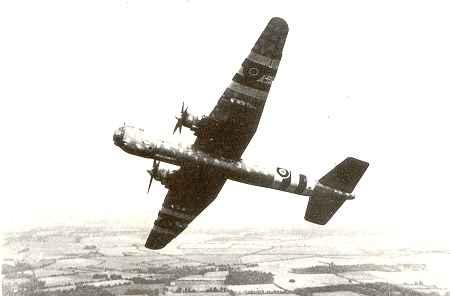
Photo : source inconnue - Unknown source
Etats-Unis - United States
Le He 177 A-7 cédé par les français (n° 550256) aux américains fut ramené à Farnborough en Angleterre. Les américains souhaitaient le convoyer outre-atlantique et envisagèrent au préalable un voyage d'essai entre l'Europe et l'Afrique du Nord. Lors d'une escale à Orly, il fallut changer un groupe de moteur. En redécollant le 28 février 1945, un pneu éclata et l'avion fit un cheval de bois. Il fut jugé irréparable. Le He 177 cédé aux Anglais par les Français (n° 550061) fut finalement expédié en caisses aux USA. On ne sait pas ce qu'il devint.
The He 177 A-7 given by the French (# 550256) to the Americans was sent to Farnborough in England. The Americans wished to fly it across the Atlantic but planned at first a test flight between Europe and North Africa. During a stopover in Orly (France), it was necessary to change a group of engines. When taking off again on February 28th, 1945, a tire burst and the aircraft made a ground loop. It was considered irreparable. The He 177 A-5 given to the English by the French (# 550061) was finally sent in containers in the USA. We do not know what it became.